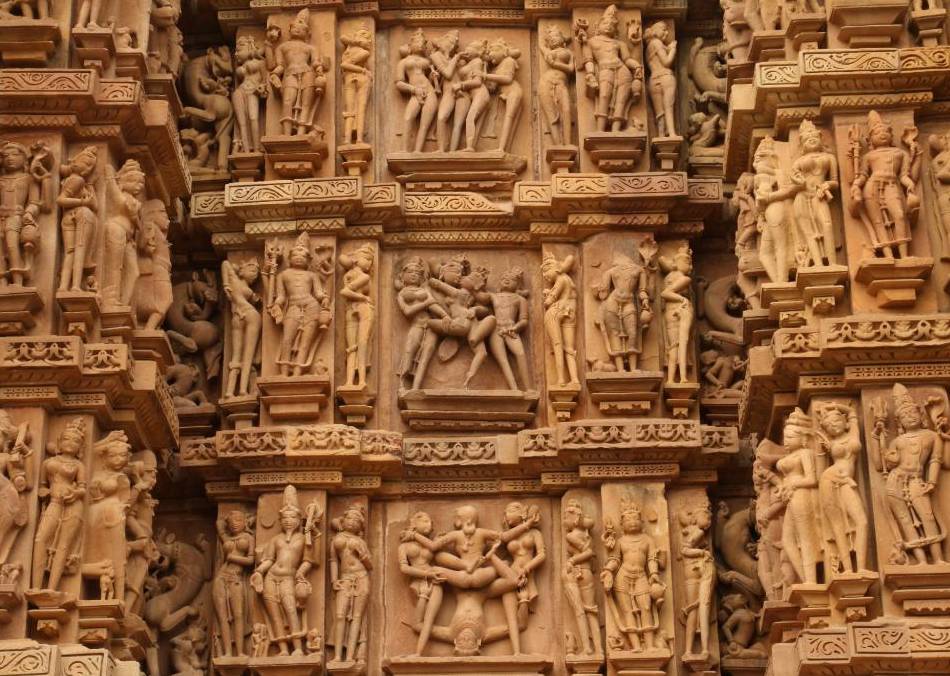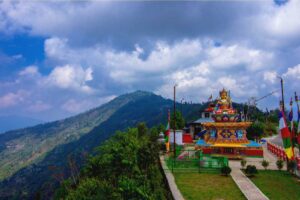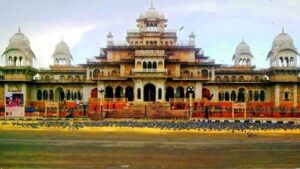The Khajuraho Temples are a group of ancient Hindu and Jain temples located in the Chhatarpur district of Madhya Pradesh in India. These temples were built during the Chandela dynasty between 950 and 1050 CE and are now a UNESCO World Heritage Site. The temples are famous for their intricate carvings and sculptures, which depict various deities, scenes from the Hindu epics, and everyday life in medieval India. In this blog, we’ll explore some interesting facts about the Khajuraho Temples that make them a must-visit destination for anyone interested in ancient Indian architecture and art.
- The Khajuraho Temples were built by the Chandela dynasty, which ruled over the region from the 9th to the 13th century CE. The temples were built over a period of 200 years and were originally a group of 85 temples. Today, only 22 of these temples survive.
- The Khajuraho Temples are divided into three groups: the Western Group, the Eastern Group, and the Southern Group. The Western Group is the largest and most famous of the three groups, and it includes some of the most stunning temples, such as the Kandariya Mahadeva Temple, the Lakshmana Temple, and the Chausath Yogini Temple.
- The temples at Khajuraho were built using a combination of sandstone and granite. The sandstone was sourced from the nearby Panna Mines, while the granite was brought from the quarries located in the Vindhya Range.
- The carvings and sculptures on the Khajuraho Temples depict a range of subjects, including scenes from Hindu mythology, depictions of the 32 forms of the goddess Shakti, erotic sculptures, and everyday life in medieval India. The erotic sculptures have made the temples famous worldwide, and they depict various sexual positions and acts.
- The erotic sculptures on the Khajuraho Temples were not intended to be pornographic. Instead, they were meant to symbolize the union between the male and female energies, which is an important aspect of Hindu philosophy.
- The Khajuraho Temples were lost to the world for several centuries until they were rediscovered in the 19th century by a British surveyor named T.S. Burt. Burt was in charge of surveying the region for the British government and stumbled upon the temples by accident.
- The Khajuraho Temples were abandoned by the Chandela dynasty in the 13th century CE, and they fell into disrepair over the centuries. The temples were eventually covered by dense forests and were lost to the world until their rediscovery in the 19th century.
- The Kandariya Mahadeva Temple is the largest and most ornate temple in the Khajuraho complex. It stands at a height of 31 meters and is adorned with over 800 sculptures and carvings.
- The Khajuraho Temples were constructed using the nagara style of architecture, which is characterized by its tall and curvilinear spires. The temples also incorporate elements of Dravidian and Indo-Aryan styles of architecture.
- The Khajuraho Temples were built using a technique known as the mortise and tenon joint, which is a method of joining two pieces of wood or stone together. This technique allowed the builders to create intricate carvings and sculptures without the use of nails or cement.
- The Khajuraho Temples were designed to align with the cardinal directions, and the temples face east, west, north, and south. This alignment is believed to have had symbolic significance in Hinduism, as each direction is associated with a different deity.
- The Khajuraho Temples were built during a time of relative peace and prosperity in the region, which allowed the Chandela dynasty to focus on art and architecture. The temples are a testament to the artistic and engineering skills of the builders and craftsmen of that era.
- The Khajuraho Temples are known for their intricate and detailed carvings, which are among the finest examples of Indian art. The carvings include depictions of gods and goddesses, mythical creatures, dancers, musicians, and everyday life in medieval India.
- The Khajuraho Temples are a popular tourist destination, attracting visitors from all over the world. The temples are open to the public from sunrise to sunset, and visitors can hire guides to learn more about the history and significance of the temples.
- The Khajuraho Temples are not just a collection of buildings and sculptures, but a living testament to the spiritual and cultural heritage of India. They are a reminder of the rich and diverse traditions of this ancient land and a testament to the enduring power of art and creativity.
In conclusion, the Khajuraho Temples are a fascinating and awe-inspiring destination that should be on every traveler’s bucket list. The temples are a testament to the artistic and engineering skills of the builders and craftsmen of the Chandela dynasty and provide a window into the rich and diverse cultural heritage of India. Whether you’re interested in art, architecture, history, or spirituality, the Khajuraho Temples have something to offer everyone. So why wait? Book your trip today and experience the magic of this ancient wonder for yourself!




